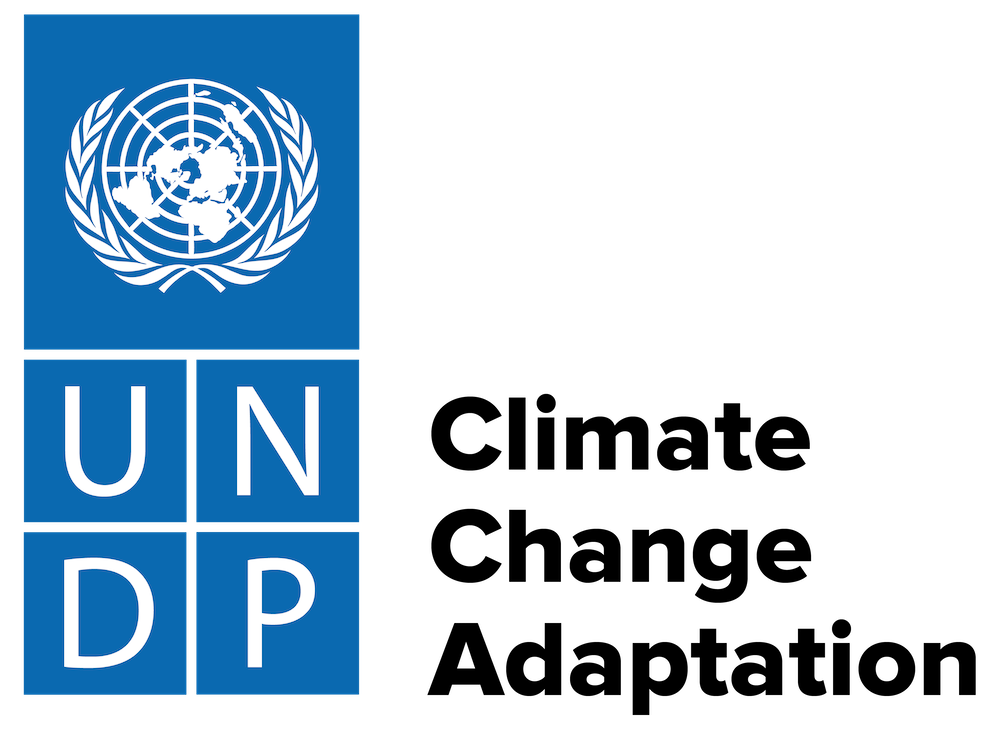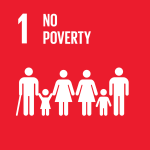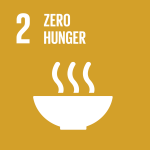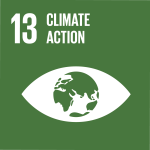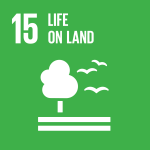
According to the World Bank, agriculture in Ghana's northern region is increasingly threatened by dry spells, unpredictable rainfall and rising temperatures. Farmers also face recurring pest and disease outbreaks.
In northern Ghana, farming is constrained by a single rainy season from May to September. Limited water availability, poor crop yields and high poverty rates have driven many people, especially young people, to migrate south in search of better opportunities. In fact, a 2021 Ghana government report found that 30 percent of the population are internal migrants, with most moving from north to south.
An initiative led by non-profit Link Ghana is beginning to reverse that trend. By introducing aquaponics—a sustainable agricultural system that combines fish farming with vegetable cultivation—communities in the north are now able to farm year-round, ensuring a stable food supply and new income opportunities. This entrepreneurial solution is encouraging young people to build futures in their own communities.
With support from the UNDP-Adaptation Fund Climate Innovation Accelerator (AFCIA), and working closely with communities, the initiative is currently being implemented in the towns of Navrongo, Paga and Fumbisi.
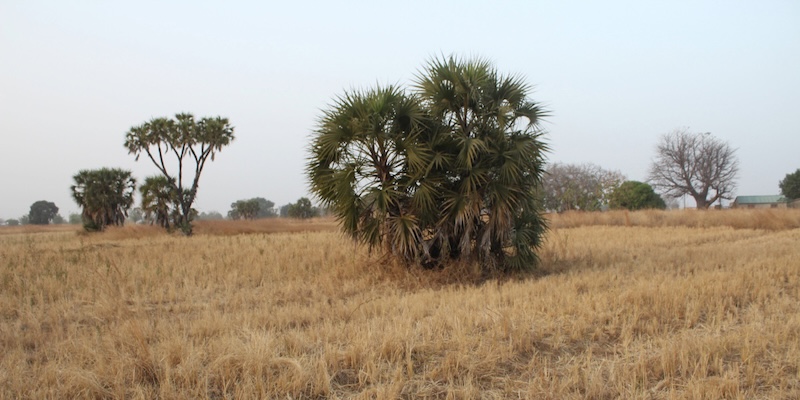
The challenges of arid conditions affect crops around Navrongo, Paga and Fumbisi. Photo: Link Ghana
How communities are building aquaponics systems with local materials
Link Ghana has dedicated five hectares of land to this initiative, building five fish tanks, each capable of holding 2,000 young fish (fingerlings). Wastewater from these tanks, rich in nutrients, is used to irrigate nearby vegetable plots. In total, 250 small-scale farmers benefit directly from this setup, with another additional 350 indirectly.
The tanks are constructed using locally available materials—sand, stones and cement. Pipes transport water from community wells, while women and children contribute by collecting sand and stones. Cement and other construction materials are sourced from nearby markets, ensuring that the project supports the local economy.
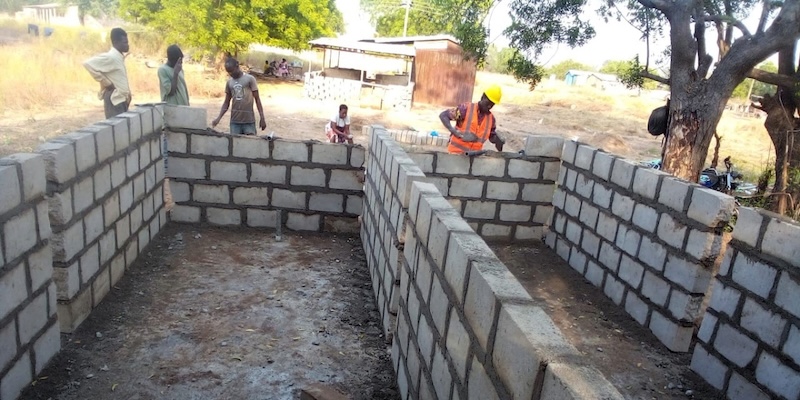
Community members working together to construct two catfish tanks. Photo: Link Ghana
Fingerlings and baby catfish raised in the tanks provide a vital source of nutrition and income. Also, the wastewater from the catfish, rich in nutrients, is piped for irrigation and fertilization to nearby vegetable gardens.
“My family will eat catfish soup regularly and I believe it will help the growth of my children.” – Gifty Achoga, a local community farmer
To preserve harvested fish, traditional smoking methods of open fires have been improved with the introduction of fuel-efficient clay ovens, which reduce firewood use by 75 percent. A more durable option made from iron sheets provides another alternative.
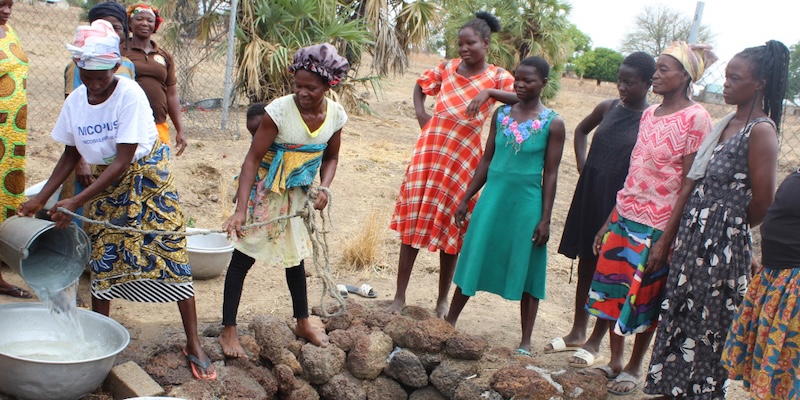
Women from the Kologo Community in the Kassena-Nankana Municipality fetch water for the new initiative. Photo: Link Ghana
Empowering women and youth through climate adaptation training
Community participation is at the heart of the project. So far, 364 residents—69 percent of them women—have received training on aquaponics, climate resilience and income diversification. Their knowledge is expected to benefit an additional 1,950 people through peer-to-peer learning.
“I joined this group to leverage on the solidarity and savings to expand my fish selling business. I normally buy from fisher folks and smoke, store and sell during the dry season. But now, I am saving to construct my own tank.” – Gifty Achoga
Catfish also holds cultural importance in northern Ghana. It’s a key ingredient in local dishes and is especially prized during the final funeral rites, a tradition that significantly increases its value during the dry season.
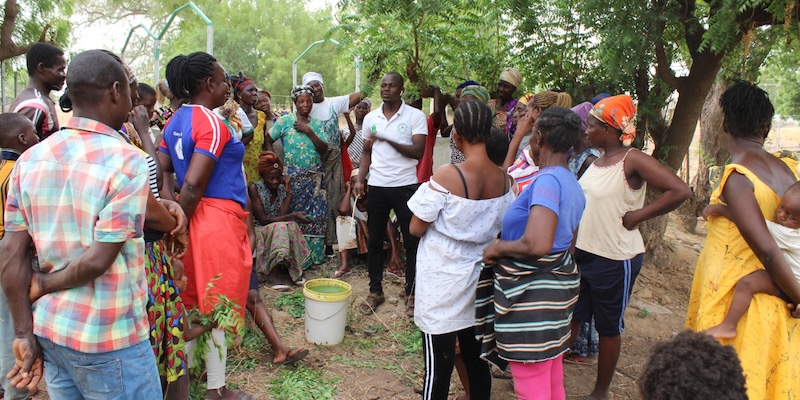
Community members attend a local training for organic vegetable production. Photo: Link Ghana
Increasing farmer incomes and reducing youth migration
With regular harvests of both fish and vegetables, Link Ghana projects a 45 percent increase in household incomes. Farmers involved in the initiative have also formed a Village Savings and Loan Association (VSLA), using pooled savings to reinvest in the community—buying materials like cement, pipes and iron rods to expand aquaponics infrastructure.
“The production of this fish will transform our lives and the lives of children. We will sell and make profit to support our families.” – Achoga
This kind of local innovation is helping reduce youth migration. Although many young people migrate south hoping for fertile lands and water, over 70 percent end up without secure employment or income, and 84 percent struggle to get three meals a day. Many become stranded, unable to afford a return journey and facing high vulnerability.
“Link Ghana envisions a world without poverty. Where men and women’s rights are upheld. We are trying to stop the migrations and give [women and youth] other options to help their local economy.” – Zuweira Yakubu, project coordinator at Link Ghana
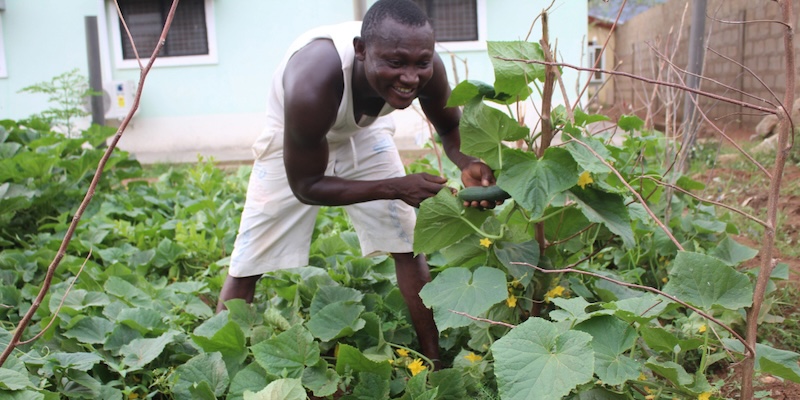
Youth leader Sunday Atiiru harvesting cucumber from the garden. Photo: Link Ghana
Through aquaponics, clean energy technologies and inclusive community participation, this initiative is not only addressing climate and food security challenges, it is laying the foundation for long-term prosperity and resilience in northern Ghana.
*
Supported by financial contributions from the Adaptation Fund and the European Union, the UNDP-AFCIA programme has awarded 44 micro and small grants to locally led organizations across 33 countries worldwide, accelerating their innovative solutions to build resilience in the most vulnerable communities.
UNDP-AFCIA is one of two featured programmes under the Adaptation Innovation Marketplace (AIM), a multi-stakeholder strategic platform that promotes scaled-up adaptation at the local level.
